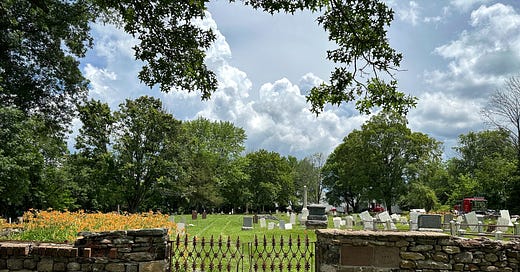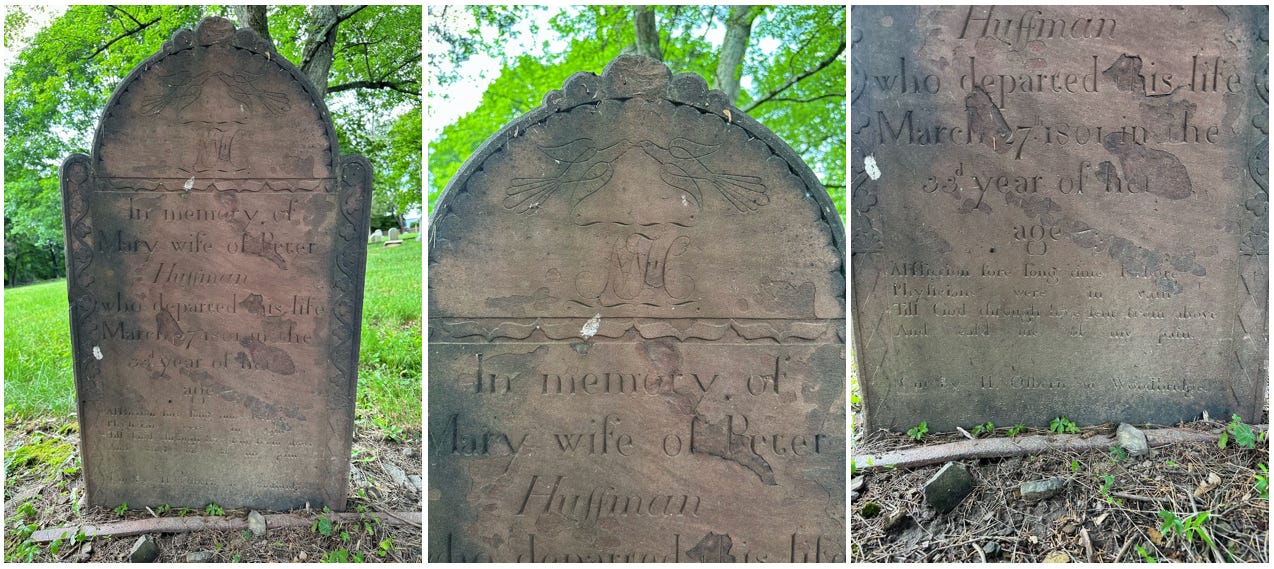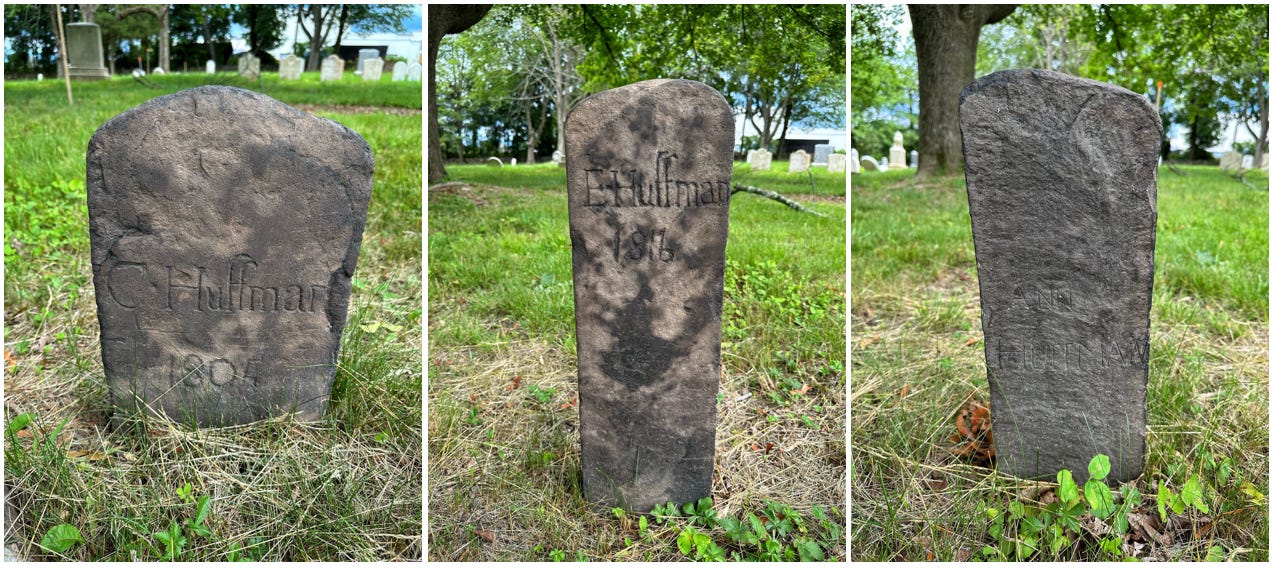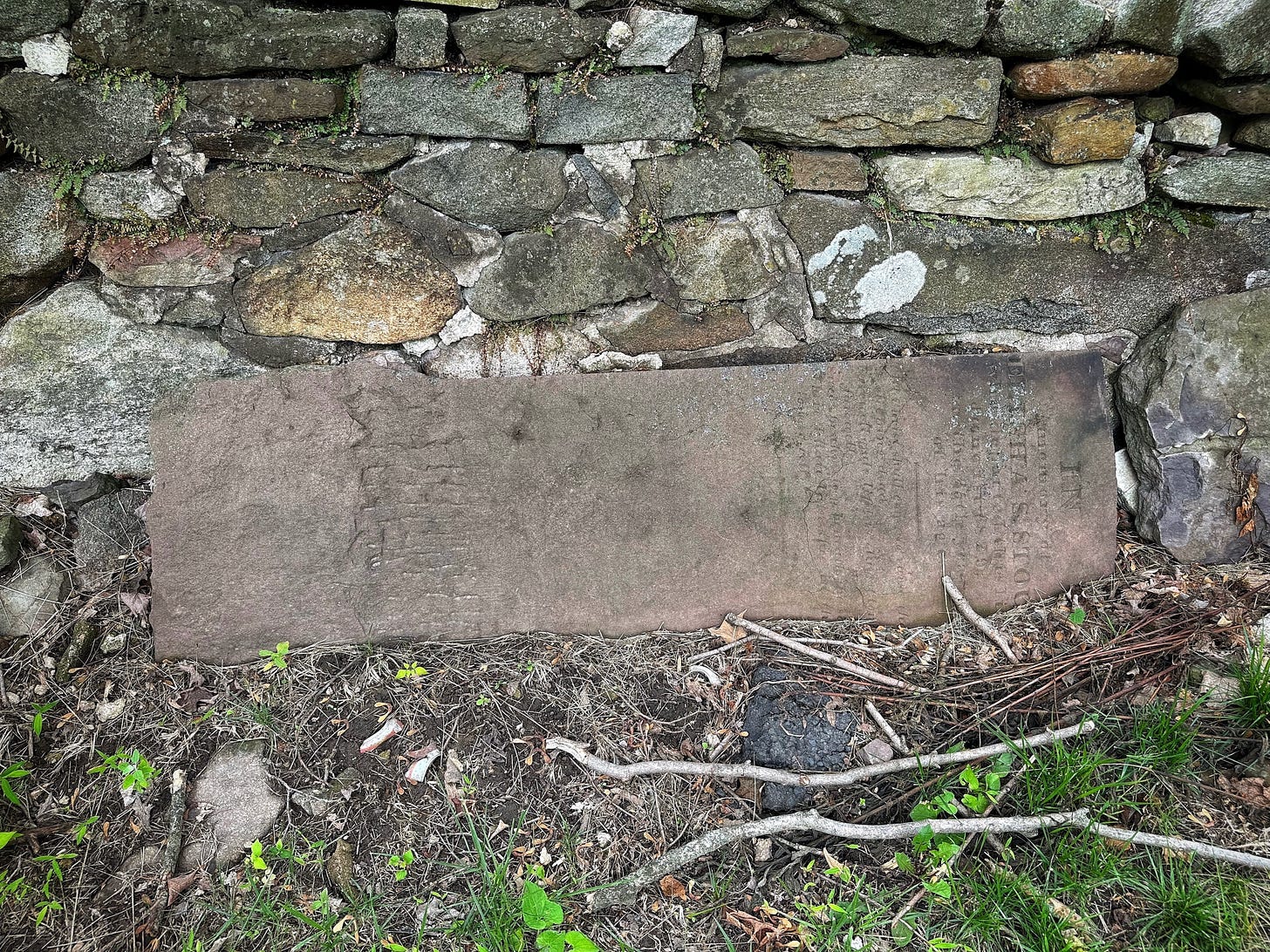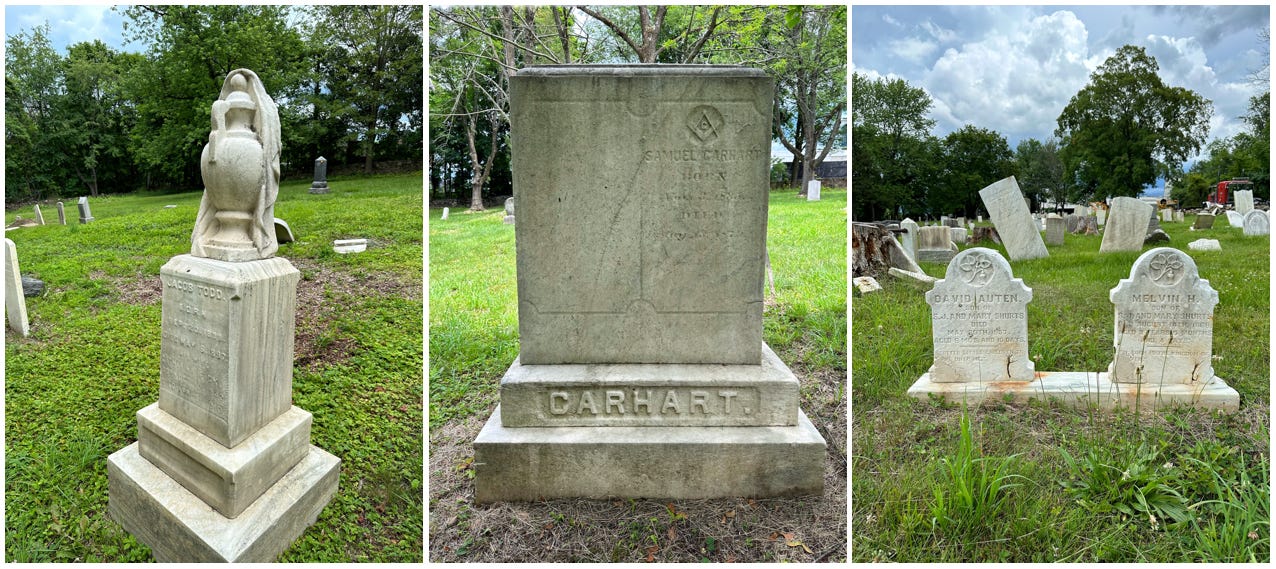Sunday Pastries With the Dead 30
The circa-1760 Old Lebanon Reformed Church Cemetery in Lebanon, NJ.
This week’s New Jersey-based cemetery, established in 1760, is actually the precursor to last week’s SPWTD graveyard—they both go by the same name (save an “old” and “new” qualifier) because this first spot is where the shared congregation originally placed their church.
When the initial structure burned down, the congregation rebuilt it in a different part of town and the second burial ground was incorporated beside it.
The oldest recorded headstone here dates back to 1769, though it appears to be long gone—the plot contains over 400 burials, and while there are plenty of gorgeous planted flowers and evidence of somewhat regular groundskeeping, many of the headstones have fallen from their original spots and been lined up against the old stone wall (originally built in 1793, updated in 1817), likely never to be reunited with the deceased.
Two of the oldest headstones I happened upon were Mary Rodenbough, who died in 1803, and John Huffman, who died in 1801. Both of these stones are beautifully preserved with lovely, legible epitaphs. John’s is especially interesting because you can see where the carver ran out of space for the words “alarms” and “sends” and had to continue them onto the next line. I also love the old (incorrect?) spelling of “dois/does,” “we/wee,” “should/shold,” and “arms/armes.” Some carvers chose to include their own shorthand for words or letters—both of these use what looks like “r” for “s” in some spots, which—along with a shared font style and stone type—leads me to believe these are by the same carver.
Speaking of carvers, there’s a wealth of stones with maker’s signatures here, which is a rarity. Headstone carving was a very respected and prosperous trade in the 1700s and 1800s, and tracking where they originate is an exciting exercise for us history buffs. Mary Huffman’s 1801-era stone gave me pause for a few different reasons. At first glance, the intricate borders and lovely twin dove engraving set it apart from others of its era in this burial ground. The carver was obviously quite adept, as they feature several different fonts: both an italicized and unitalicized serif and beautifully detailed cursive initials at the top. The real treasure can be found at the very bottom: a maker’s mark that reads Cut by H. Osborn of Woodbridge. That would be Henry Osborn, who worked with his brother Jonathan out of both Woodbridge and Scotch Plains, NJ. Here’s a wonderful blog with some other examples of their work, which contain similar motifs to Mary’s.
Two other maker’s marks I happened upon were John Stout’s 1889-era stone, which simply reads Whitehouse. This could be the last name of the carver, or the town of Whitehouse, NJ, where the carver was located. Michael Shurts’ 1840 stone is signed with a weathered mark that appears to begin with J.H., includes either a town or last name that starts with an S, and ends with NJ.
In rural areas like this, there were many farmers and carpenters who worked as amateur stone carvers in the off-season. During the cold New England winters, they’d operate indoors handling orders for headstones they received throughout the spring, summer, and fall. These stones are apparent by their simplicity and less refined lettering—though they’re still quite accomplished and charming. These three Huffman family stones are excellent examples of amateur carvings—C and E’s appear to be by the same person, while Ann’s is by someone else, as the lettering is quite different.
Elisha Stout’s 1829-era headstone, uprooted and leaned vertically against the cemetery’s bordering fieldstone wall, is an incredible example of a fully intact early marker. These stones weren’t anchored firmly into the ground the way modern ones are; they were simply made long enough to bury deeply, which is why so many have broken in half due to the fragile nature of the materials, erosion, and the elements. Sometimes there are fascinating surprises to be found on the lower portions of stones, which carvers believed would stay buried. You may find recycled stones or areas where carvers practiced their lettering. Elisha’s stone shows some interesting markings—I’m not sure if they’re weathered practice marks or just cross-hatching to give the stone purchase when mounted in the ground.
Some excellent carvings of symbols on older stones include these urns (symbolizing the soul shedding the earthly body) on Anna Hummer and Margaret Apgar’s 1818-era markers—the lettering (especially those g’s!) and tympanum symbols on the two are identical, so they’re very likely by the same carver or apprentice. I also love the primitive floral design on Anna Huffman’s 1809 stone, which includes another nice example of cursive initials and decorative borders.
Rounding out today’s visit, a few more “recent” symbols are this excellent shrouded urn topper on Jacob Todd’s 1897 marble obelisk, and the square, compass, and Masonic G on Samuel Carhart’s 1879-era double marker, indicating he was a member of the Freemasons. The empty side next to Samuel’s name is quite arresting—it’s entirely possible his wife or another family member is buried beside him but there was no money to engrave the stone at the time. Last, we have little brothers, eight-month-old David Auten and two-year-old Melvin H. Shurts, whose 1857 and 1868-era stones bear matching budded flowers, symbolizing lives cut short before they were able to fully bloom.
Thanks for joining me on this especially fascinating tour—until next Sunday, fellow taphophiles!

